Introduction
In todays changing business world it's crucial for stakeholders, investors and potential buyers to grasp the real worth of a company. Beyond figures business valuation plays a key role, in strategic planning, negotiations and fostering growth. Whether seeking support enticing investors or mapping out expansion strategies having a clear understanding of a companys value can open up endless possibilities.
This article thoroughly explores the aspects of assessing a businesss value in depth—discussing its significant significance and the crucial factors that impact it along with the typical methods employed to gauge a companys overall value.From profitability and market presence to economic conditions a range of elements are instrumental in determining a companys valuation.Understanding these components and the strategies utilized such, as income,market and asset based approaches enables entrepreneurs and stakeholders to grasp their businesss value effectively.
Furthermore the article emphasizes the importance of assets such as brand reputation and intellectual property underscoring their increasing influence, on a companys total worth. By delving into this subject the article seeks to offer perspectives and hands on expertise to help readers navigate the intricate financial landscapes and make informed decisions that lead to long term prosperity.
Why Business Valuation is Important
'Understanding the worth of an organization is essential for stakeholders involved such as proprietors, investors, and potential buyers.'. An conducted appraisal not only provides an overview of the financial status but also functions as a strategic instrument, for strategizing and bargaining purposes. For example, entrepreneurs seeking to divest their enterprise benefit from having perspectives and chances to increase profits. In the legal case of Thomas Connelly v United States the valuation of a company was notably affected by the incorporation of life insurance benefits, into the outcome.
Precise business evaluations are crucial not for obtaining financial backing but also for drawing in potential investors who are drawn to enterprises with distinctive and inventive qualities that set them apart from others. 'Whether it be an innovative product or technology that disrupts the industry or a fresh solution tailored for a specific audience segment.'. 'This uniqueness influences the increase of an organization's value; this is clear in the software industry where both positioning in the field and competitive edge play crucial roles.'. Companies that consistently demonstrate innovation, through research and development efforts or strategic acquisitions often command valuations in the industry.
Additionally accurate assessments help in making informed choices regarding development and growth. This proves to be especially essential in the dynamic business environment, where companies need to swiftly adjust to evolving requirements. For instance the notable increase in expenditures, during the holiday season of 2023 as highlighted by Adobes report emphasizes the significance of keeping up with market trends and customer preferences.
Ultimately, examining commerce from the viewpoints of earnings and income provides a solid foundation for promoting growth, securing financial support, and navigating complex financial landscapes.
Key Factors Influencing Business Valuation
'Valuing a company requires considering key factors at play; firstly the organization's profitability is paramount as those with a track record of solid profits tend to be valued more highly.'. Equally significant are the patterns, in revenue which offer a glimpse into the growth direction of the business and the consistency of its customer base. Indicating customer loyalty and business reach.
It's important to evaluate where a business is positioned in the industry too! Consider a software firm that holds a competitive stance. They usually have a big edge over their competitors thanks to loyal customers who love their unique products and cutting edge technology they offer. To assess this accurately involves examining factors such as the extent of control over the industry and the available space for expansion while maintaining that competitive edge thriving. Some key things to consider are how recognizable their brand is and how far they've managed to spread into their industry compared to others, in the field.
Factors beyond an organization’s control such as the economy and industry dynamics influence its worth, along with market competition aspects that significantly affect its significance. Evaluating these elements carefully aids in obtaining a comprehensive understanding of an entity’s worth, facilitating better-informed choices for investors and stakeholders.
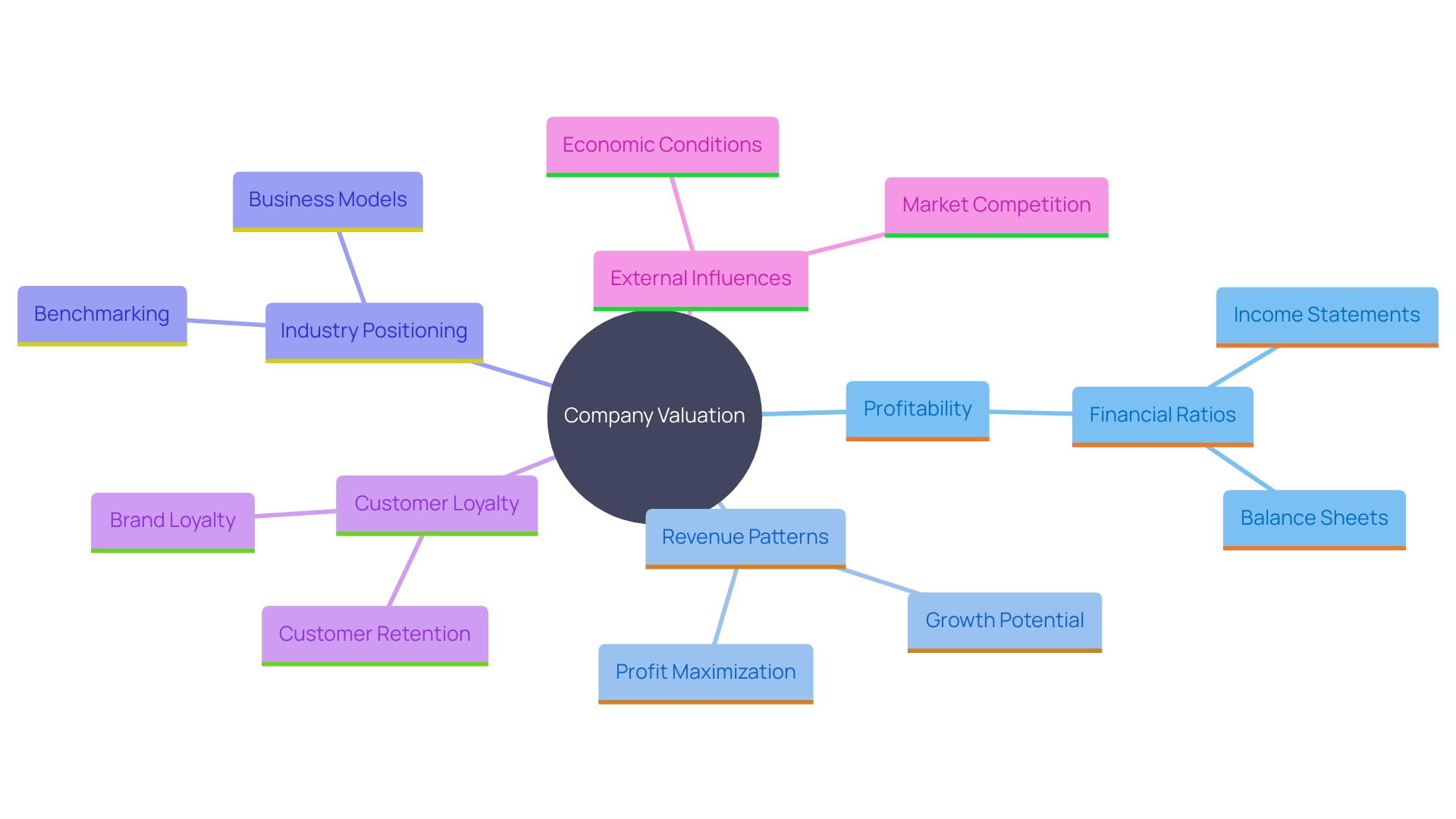
Common Approaches to Business Valuation
To understand enterprise appraisal one must grasp the techniques used in evaluating an organization's worth with three primary approaches providing unique viewpoints suited to the particular situation of the enterprise.
The initial technique is the Income Approach which centers on calculating the worth (PV) of an organization’s forthcoming earnings through the net present amount (NPV). This strategy involves predicting cash flows and converting them to present worth by using an appropriate discount rate. The effectiveness of this approach lies in its ability to provide insight into a company's potential profitability.
The next step is the Market Approach where the value is determined based on the company's position in the industry and its competitive strengths. It involves evaluating how the business compares to others in the industry. Key factors such as share growth trends and brand visibility are considerations in this assessment. A strong position in the market typically signifies a competitive edge and results in a higher evaluation of worth.
The Cost Approach assesses the expenses needed to substitute the assets of an organization and is frequently utilized for firms with significant physical assets but may be less appropriate for those greatly reliant on intangible assets, such as technology firms. It incorporates types of capital to present an accurate worth generated by entities in a thorough and verifiable manner.
By grasping and implementing these strategies effectively, entrepreneurs can acquire an understanding of their venture's worth, which enables them to make informed choices that propel lasting prosperity.

Market-Based Approach
'The assessment of a company using a value-oriented approach involves comparing it to the selling prices of organizations in the same industry sector to determine its worth effectively utilizing real-time data that reflects buyer sentiments and prevailing economic dynamics as illustrated by evaluating the software sector where assessing standing is vital in gauging value factors such as brand visibility, customer loyalty levels, and reach play a pivotal role in establishing a robust position typically signifies an edge such as dedicated clientele or distinct product propositions.'. In changing markets with constant buying and selling of companies is when this strategy works best as it mirrors real competitive positions and growth trends accurately.
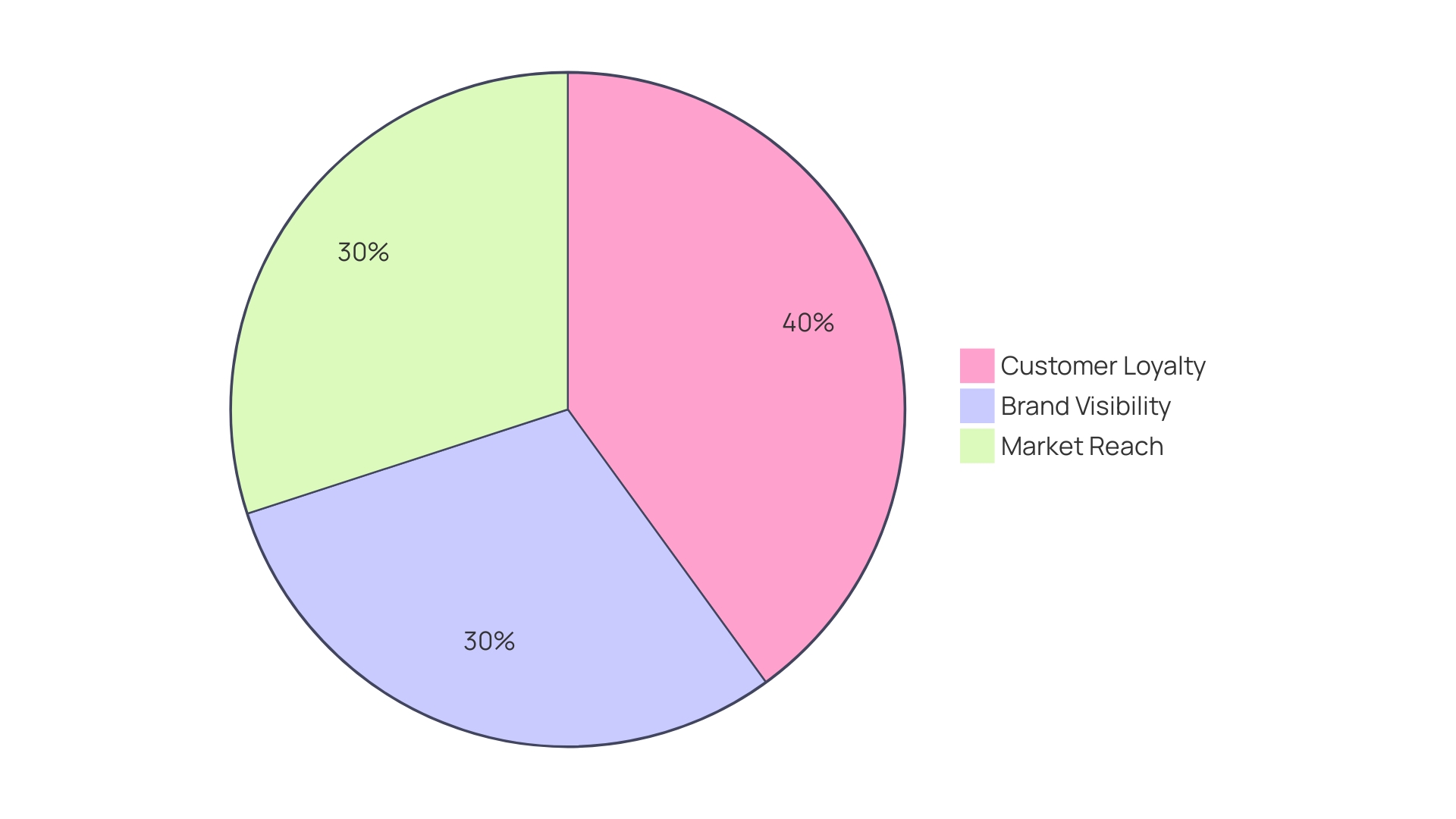
Asset-Based Approach
This technique focuses on evaluating all the assets. Both non tangible. That an organization possesses thoroughly by determining the net worth of its assets after deducting liabilities from the total assets owned by the business entity. This method is especially advantageous for organizations with tangible assets, like real estate or manufacturing firms as it offers a straightforward evaluation of their resources. According to Abhishek Kaldate from Astra WordPress Themes, having a vision of your company's direction over the next five or ten years is crucial for making informed decisions and accurately evaluating its worth.
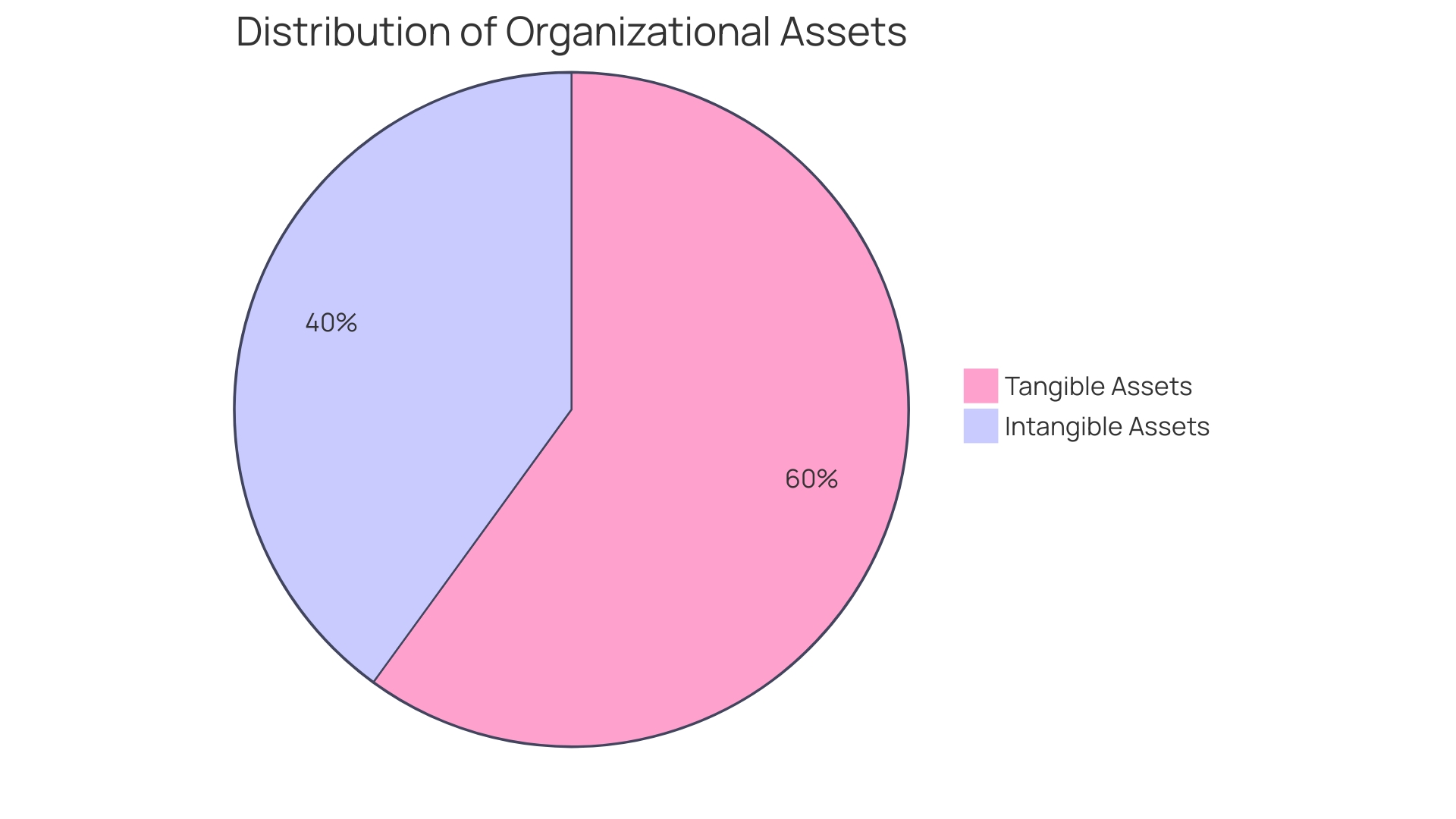
Income-Based Approach
The income based method of valuing an enterprise emphasizes assessing the value of the expected future cash flows of a company. It is particularly beneficial for firms with revenue streams as it considers both profitability and potential growth. By discounting earnings to their current value, this approach highlights the financial potential of an entity.
To effectively use this approach, it's essential to consider the position of the business in its industry and its competitive strengths. For instance, a technology company that holds a position in the industry is usually ahead in competition due to factors such as having loyal customers, distinct products, or cutting-edge technology. Evaluating position in the industry involves examining factors, such as share growth trends and the sustainability of these advantages. Companies that can consistently innovate and adapt to changes in demand tend to be highly esteemed.
Furthermore, the significance and extent of an organization's assets (IP) are crucial elements in assessing its worth. Intellectual property assets like patents, trademarks and confidential information play a role in boosting investor trust and market competitiveness. Conducting a thorough IP review that examines safeguards and the impact of IP on revenue streams is crucial during this assessment phase. Considering all these factors together, the income-based approach provides a viewpoint on the organization's worth.
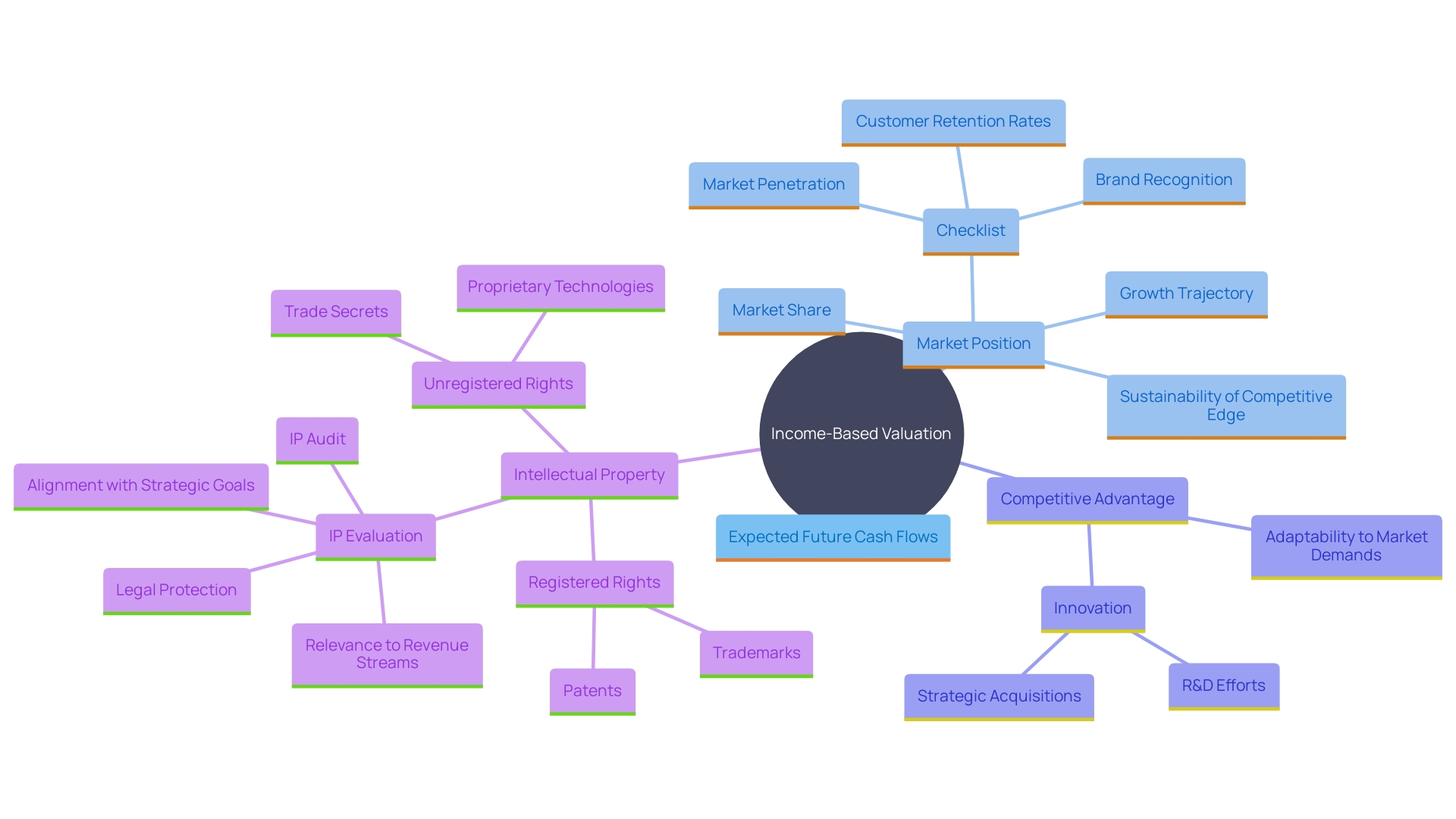
Understanding Intangible Assets
Brand reputation and customer relationships are elements in assessing an organization's worth alongside tangible assets such as physical property and equipment. Research indicates that brands can account for approximately 30% of a business's value. Understanding the significance of assets is crucial for gaining an accurate picture of a business true value, in competitive industries. Brand Finance reported that the worldwide intangible worth increased by 8% rising from $57..trillion in 2022 to $61..trillion in 2022 to emphasize their increasing significance. These intangible assets include rights, r"Wealth and intellectual property play a role, in showcasing a company's actual potential and competitive advantage.
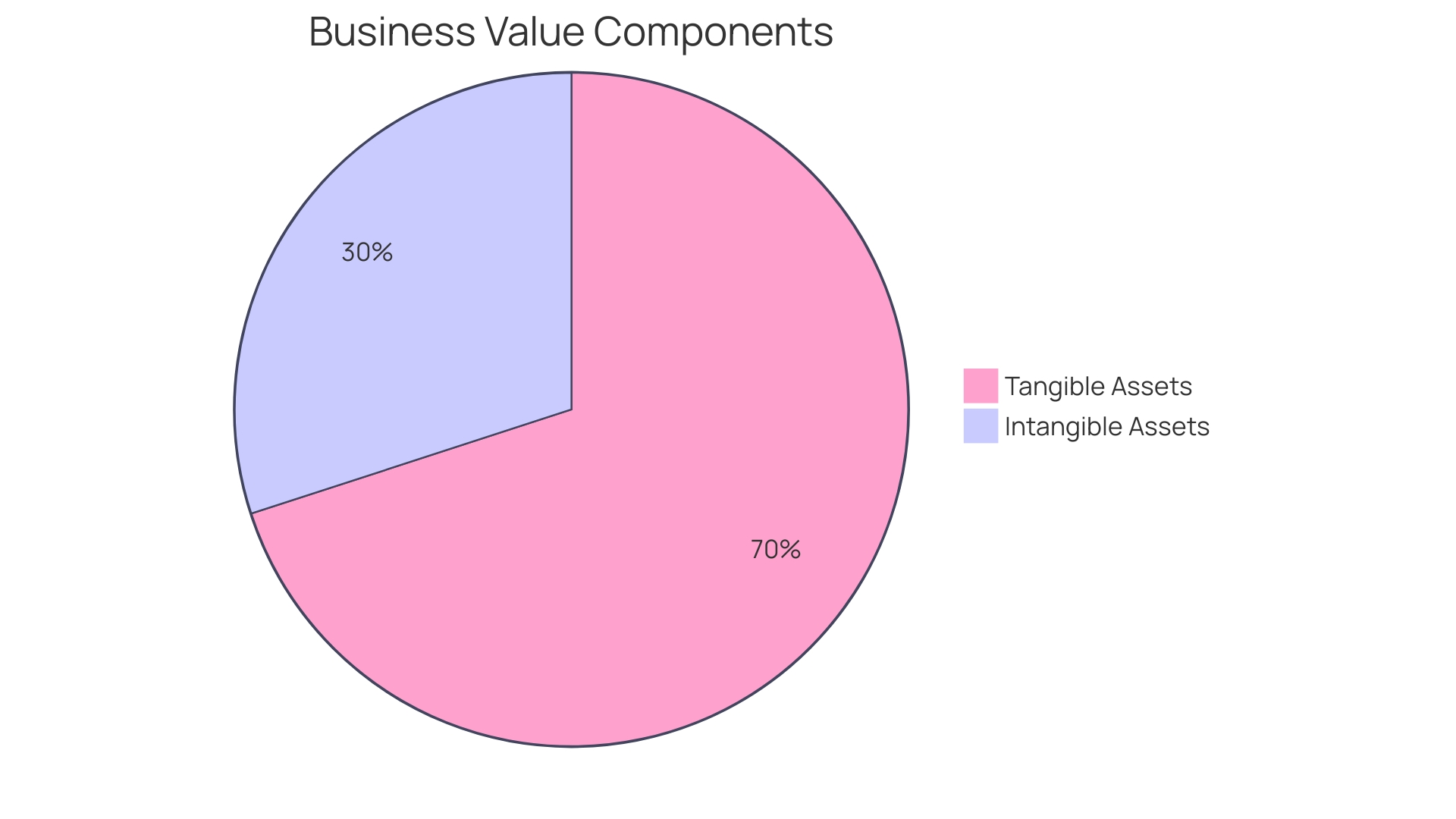
Conclusion
Understanding the worth of a business goes beyond financial analysis. It plays a vital role for everyone connected to the business venture. A precise valuation of a business aids in strategic planning attracting interested investors and guiding decisions for growth. Real world instances demonstrate the importance of grasping the value of a company showcasing how distinct assets and creative solutions can boost its standing, in the market.
Numerous significant aspects impact the assessment of a business worth; these factors include its profitability levels and market position well as external economic factors, at play. An organizations capacity to adjust to shifting market trends while upholding customer loyalty and staying ahead in competition greatly influences its value. Furthermore the various strategies used in valuation—ranging from income based to market oriented and asset focused methods—offer viewpoints tailored to meet specific business needs.
Each strategy provides guidance that empowers business owners and key players to make well informed choices that have the potential to result in lasting success and advancement.
In the competitive environment we are in todays world; it's crucial to recognize the value of intangible assets like brand image and intellectual property rights cannot be emphasized enough—they play a substantial role in determining a companys total value and are critical for establishing credibility in the market scene. As the business sphere evolves continuously grasping these aspects and utilizing them strategically will be key, for individuals who aim to optimize their companys value and steer through the intricacies of matters efficiently.
Unlocking this understanding paves the way, for a future brimming with opportunities and achievements.




